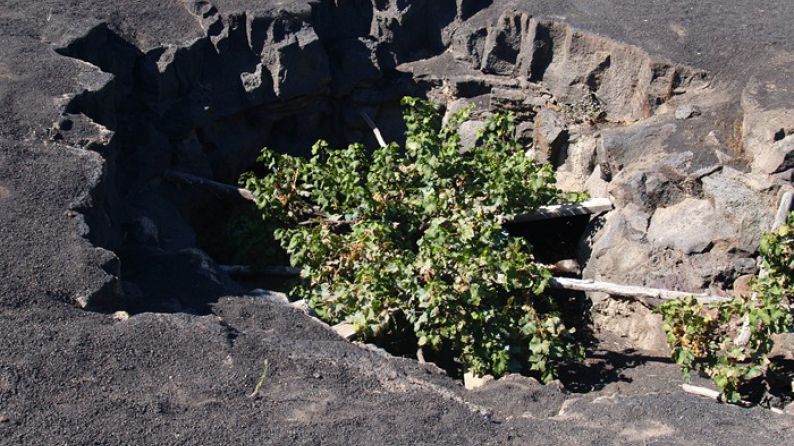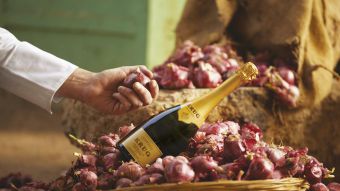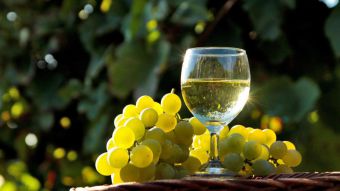The Canarian Malvasia, a legend reborn
The vineyards of Malvasia grapes which thrive in various corners of the Canary Islands offer an extensive range of wines - from dry white to sparkling, but above all some fantastic sweet wines – that is well worth trying and preserving as one of Spain's winemaking jewels.
We know only too well: wine is not now what it used to be. Nor is the world, either. Today, information travels more rapidly than the wines themselves. As a consequence, the spreading of wine technology has broken the monopoly held by the traditional wine-producing regions. Quality is no longer anyone's exclusive privilege and wines which are increasingly more acceptable –but inevitably resemble one another, as to be expected - are cropping up all over the planet like clones.
To avoid becoming bored, one of the few options left to us is to revive the flavours and aromas of historic wines.
In the case of the sweet Malvasias that are made in the Canary Islands, the prospect is all the more exciting, because these wines have been near to extinction, but are now enjoying a strong revival, exhibiting all their powers of seduction.
Greek wines in fashion
To be perfectly honest, it must be said that the Canaries are not the only ones to have benefited from the virtues of the old Malvasia, one of the most ancient varieties known to us.
With its origins in some remote vineyard in Asia Minor – its name pays tribute to the port of Monemvasia, in the southern Peloponnese – it was cultivated in abundance on the island of Crete long before Venetian traders in the 13th century promoted the fashion for sweet and aromatic “Greek wines”. They were such a great success that the shops that were selling them even ended up by being called “malvasias”.
Thanks to this popularity, the grape’s vines spread all over the Mediterranean and also over the Atlantic dominions: Madeira and the Canaries.
It reached its zenith of fame in the 16th century, when there was a growing demand in the London shops for Canary Sack – the historic sweet wine produced in the Canary Islands using this grape – as well as for fine Madeira wines.
Besides favouring islands haunts, Malvasia is also grown in vineyards on the mainland: in the Levante, Rioja and Navarra, there are still some vines surviving of a grape they call Malvasia, but which has no connection with the one used for making Canary wines. The same can be said for Subirat Parent, as Malvasia is known in some areas of Cataluña. In contrast, the grape which has brought fame to the legendary sweet wines of Sitges is the same – according to recent DNA studies on the variety - as the one growing on the island of La Palma.
The peak and trough of Canary Sack
Finally getting to the point, I believe that the Malvasia we are dealing with here has been grown in the Canary Islands since Fernando de Castro from Portugal planted the first grapevines at the end of the 15th century. The peak of Canary Sack – a sweet wine aged in oak, with generous acidity and a bitter finish – on the British market occurred a century later, when Tenerife alone was exporting more than four and a half million litres of this wine. But the islands' wine growers were given no time to enjoy this moment of glory, because after several bonanza decades, disputes between the royal crowns of Spain and England resulted in the British preferring to concentrate on the Madeira wine trade.
During the crisis brought about by the decline in Canary Sack, an incident occurred which confirms the presence of saboteurs on the islands. In the village of Garachico in Tenerife, on the night of July 3rd 1666, “three or four hundred masked men forced open the doors of the wine cellars and wrecked the barrels, spilling the wine, so that streams started appearing in the streets, causing one of the strangest floods you could ever read about in the annals of the world”, according to an account by the historian José de Vieira y Clavijo. Might those vandals be the forebears of hooligans? Well no, most likely the opposite: despite the limitations, the Canary islanders were still managing to continue exporting their wines and apparently the Spanish authorities went after the “masked men” to teach them a lesson. In any case, the incident angered Charles II of England so much that he gave the order that "no wines, nor other manufactured goods or merchandise (…) from the Canary Islands (…) should enter this Kingdom of ours from this day forth".
To make matters worse, in addition to these measures there were natural disasters: an outbreak of powdery mildew in 1852, and one of mildew in 1878, afflicted the islands' vineyards and Canary Sack fell into the box of broken toys.
A dream tasting
Thanks to the god Bacchus, with the resurgence in Canary viticulture – beginning last century in the 1990s – the old Malvasia has been given a new lease of life. The heroes of this story are the islands' new generations of grape growers, who have generated considerable dynamism in the 11 denominations of origin that this community currently possesses.
They all show respect for our old lady, Malvasia, which is beginning to feature again in wines of every type and line, not only the glorious sweet wines made using age-old methods (or innovative ones, which also exist), but dry whites, semi-sweet and even surprisingly the odd sparkling wine, such as the one produced in Lanzarote by the El Grifo winery.
These figures serve to prove that Malvasia is prevailing again in the Canaries: in 2012, there were as many as 1,347 wines produced using this variety on the islands, assigned to 32 wineries.
Some years ago, the young Canarian sommelier Álvaro Prieto, who at the time was working as sommelier at the Hotel Abama in Tenerife, helped me to reach palate heaven by holding a tasting for me of various Malvasia wines on the terrace of one of the hotel restaurants, just as the sun was setting.
Thus, in a dream setting, I was able to confirm that the rich diversity, founded on the very characteristic terrains and microclimates, of the different islands’ vineyards, gives rise to a remarkable range of Malvasia wines.
Another sommelier from the Canaries, Javier Gila, pointed out an interesting fact to me regarding this diversity: the latest DNA research confirms that in the Canaries two types of Malvasia coexist, the so-called "volcanic", which grows in Lanzarote and is a natural cross between the Malvasia and the indigenous grape Marmajuelo; and the "aromatic", which is predominant in the vineyards of La Palma and the north of Tenerife and is the genuine descendant of the Malvasia di Candia which used to be grown in Crete.
Heroes of diversity
Returning to my tasting at the Hotel Abama, I still remember well the wines which impressed me most that magical evening. Among the Tenerife ones, the Viñátigo Dulce from the Ycoden-Daute-Isora D.O., mature and with spicy hints, and the Domínguez Malvasia, from Tacoronte, with a fresh, balsamic character. Very different from these is the Canari, made by the El Grifo winery in Lanzarote wanting to revive the style of the classic Canary Sack, and which, thanks to its time spent in barrel, exhibits a toasty facet, with hints of wood. However, my favourites come from the island of Palma, like Dulce Carballo, a complex wine, with touches of crystallized fruit and a slightly saline finish. Or else, Tamanca Dulce, dense and structured.
The magnitude of these treasures is properly appreciated when we are made aware of the great difficulties which the Canary winegrowers face in order to produce their wines.
In Lanzarote, for example, they are known as "conejeros" or rabbit hunters, because in their search for some soil – in a landscape dominated by volcanic ash – they dig funnel-shaped holes, which have occasionally measured more than two metres deep, for planting the vines. Then, to protect the plants from the lashing Levante winds, they build semi-circular stone walls, about 60/70 cm high. A fortress for each grapevine!
And they have it no easier in La Palma, tending their vineyards on terraces lying on steep slopes, in tiny plots with difficult access. No doubt harvesting there is not for the feint-hearted.
May they be blessed, those Malvasia heroes, who have enabled us to continue enjoying wines that are unsurpassed throughout the vineyard world.























